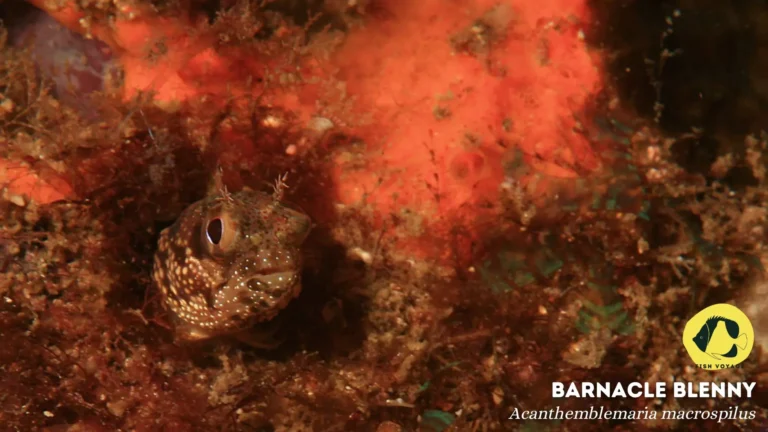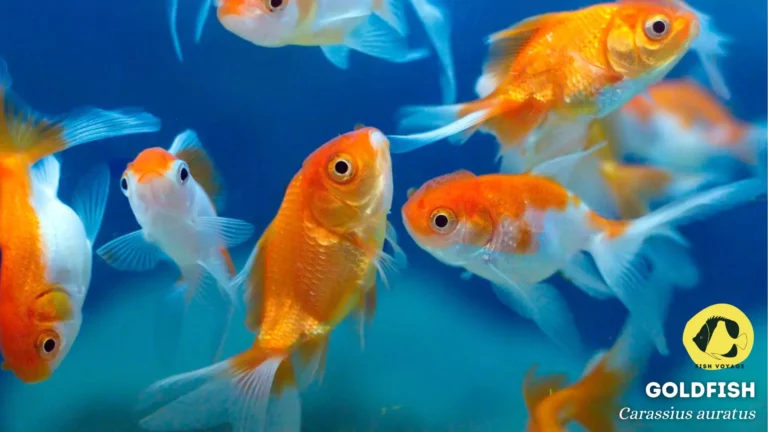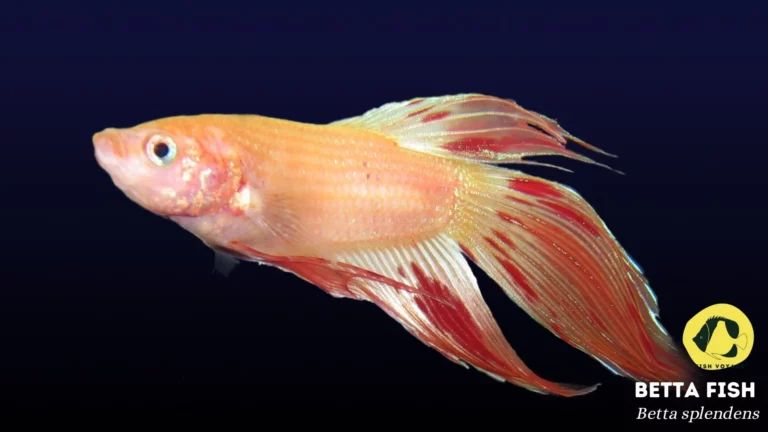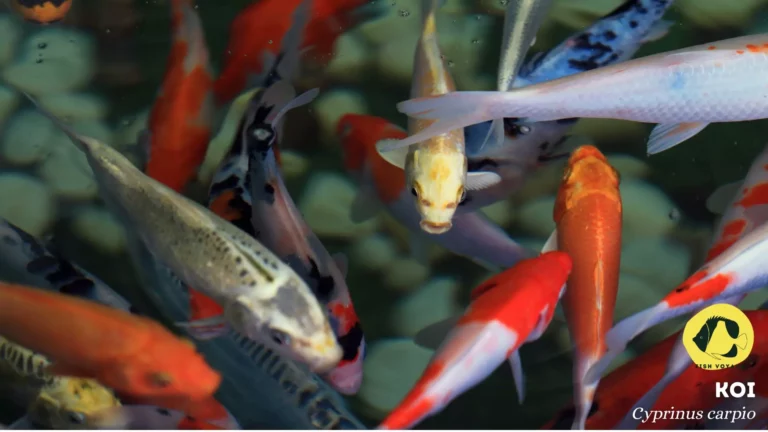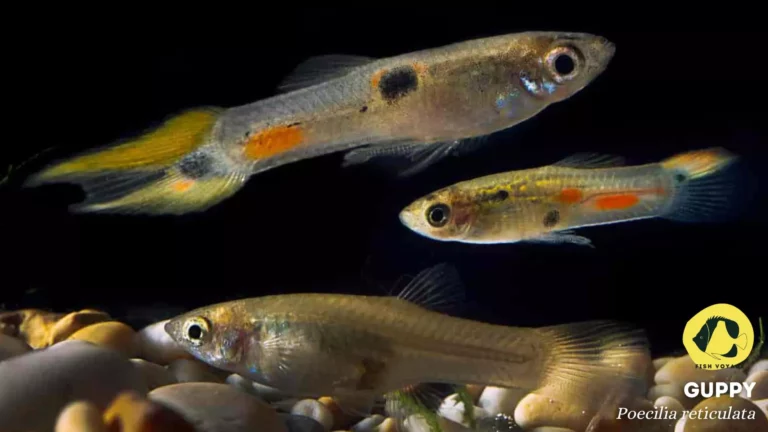Ultimate Guide to Goldfish Tapeworm Treatment
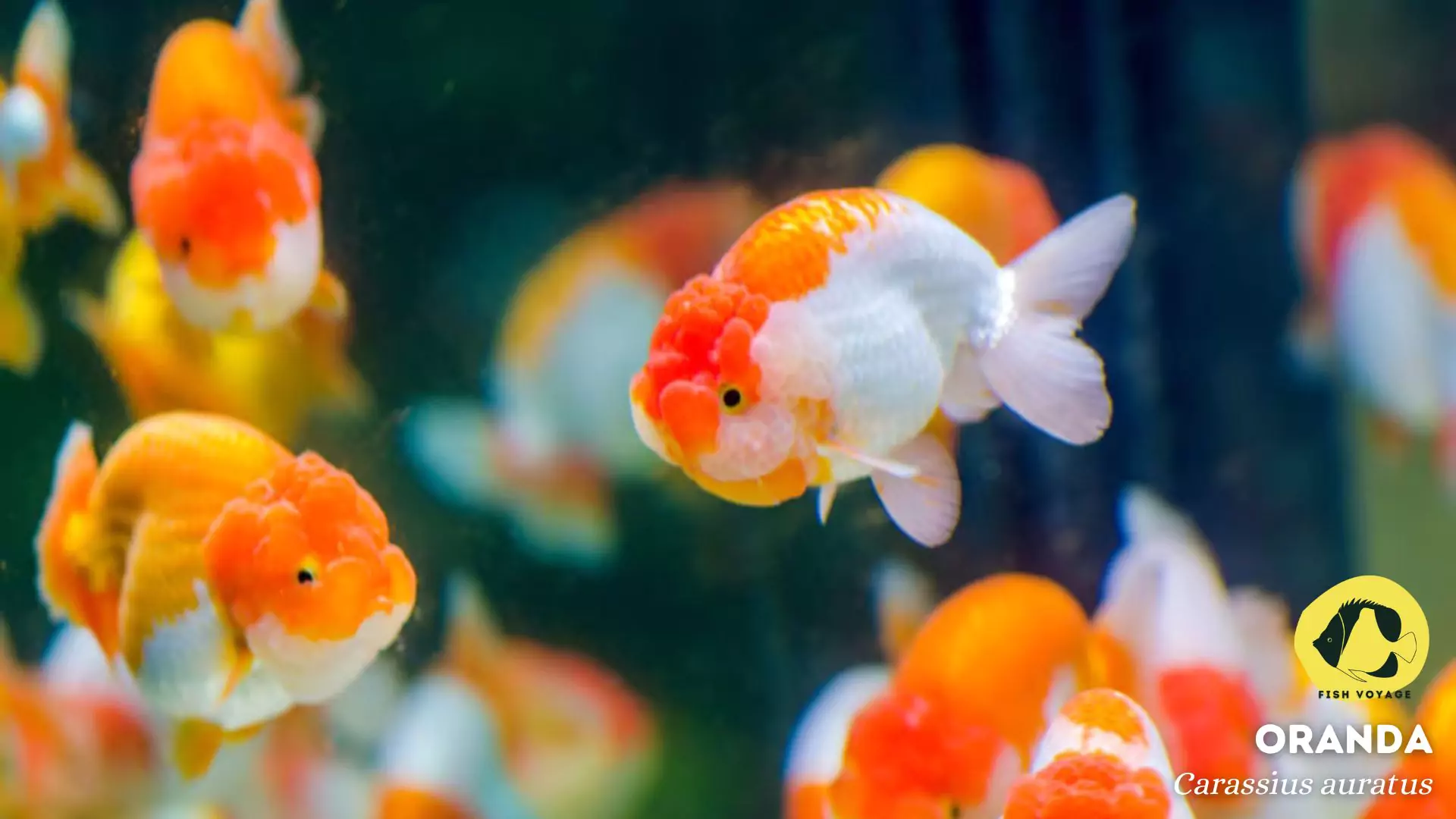
In the enchanting world of goldfish keeping, ensuring the well-being of these aquatic companions is paramount. However, lurking beneath the serene surface of your aquarium, tapeworms can pose a subtle yet significant threat to the health of your goldfish. These parasitic organisms, if left unchecked, can compromise the vitality of your aquatic friends, manifesting in subtle signs that may go unnoticed. This blog post delves into the realm of goldfish tapeworms, shedding light on the importance of timely treatment to safeguard the vibrant lives swimming in your tank. Join us on a journey of understanding, as we explore effective strategies to combat these intruders and maintain the flourishing harmony of your underwater haven. Dive in, and let’s embark on a voyage of goldfish care and well-being.
Understanding Goldfish Tapeworms
Tapeworms and Their Impact on Goldfish Health
Goldfish tapeworms, belonging to the class Cestoda, are parasitic flatworms that can infiltrate the digestive system of our aquatic companions. These ribbon-like intruders attach themselves to the intestinal lining, siphoning essential nutrients and impeding the digestive process. This parasitic relationship, if left unaddressed, can lead to malnutrition, stunted growth, and a weakened immune system in goldfish.
Common Symptoms of Tapeworm Infestation in Goldfish
Identifying the presence of tapeworms is crucial for prompt intervention. Observable signs include weight loss despite a consistent feeding regimen, lethargy, and changes in swimming behavior. Additionally, watch for the appearance of white, string-like segments resembling rice grains in the feces. A vigilant eye on these symptoms aids in early detection, preventing further deterioration of your goldfish’s well-being.
Risks Associated with Untreated Tapeworm Infections
Neglecting the treatment of tapeworm infections poses considerable risks to the overall health of your goldfish. Beyond the immediate discomfort caused by the parasites, untreated tapeworm infestations can lead to severe complications such as intestinal blockages, compromising the digestive process and causing long-term harm. Addressing tapeworms promptly is not merely a matter of enhancing comfort but a fundamental aspect of ensuring the longevity and vitality of your cherished aquatic companions.
Identifying Tapeworm Infestation
Tips on How to Visually Identify Tapeworms in Goldfish
Discerning the presence of tapeworms in your goldfish requires a keen eye. Look for thin, ribbon-like strands protruding from the anal opening or visible in the feces. These segments, often resembling rice grains, are indicative of tapeworms. Regular visual inspections during feeding or routine tank observations enhance your ability to detect these subtle intruders.
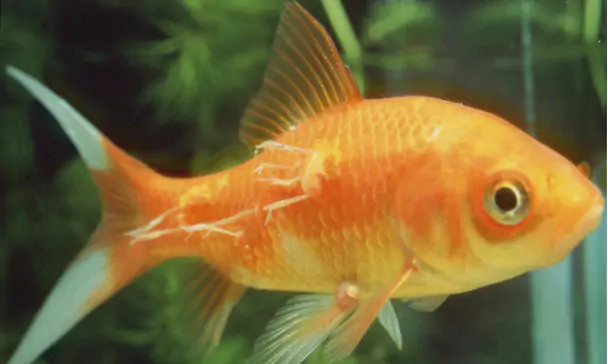
Behavioral Changes That May Indicate Tapeworm Presence
Beyond visual cues, changes in your goldfish’s behavior can serve as valuable indicators of tapeworm infestation. Watch for decreased activity, reluctance to feed, or unusual swimming patterns. Goldfish experiencing discomfort due to tapeworms may exhibit a lethargic demeanor or isolate themselves from the group. Recognizing these behavioral shifts early on is crucial for timely intervention.
The Importance of Regular Health Checks for Goldfish
Incorporating regular health checks into your goldfish care routine is pivotal for preventing and detecting tapeworm infestations. Periodically assess the overall condition of your goldfish, paying attention to body weight, coloration, and any abnormal protrusions or discolorations. Consistent vigilance not only fosters a proactive approach to tapeworm detection but also contributes to the holistic well-being of your aquatic companions.
Goldfish Tapeworm Treatment Options
Overview of Available Treatment Methods
When confronting tapeworm infestations in goldfish, various treatment methods are at your disposal. From pharmaceutical interventions to natural remedies, understanding the spectrum of options is essential for effective management.
Over-the-Counter Medications and Their Effectiveness
Over-the-counter medications designed specifically for goldfish tapeworm treatment are readily accessible. These medications typically contain active ingredients targeted at eliminating the parasites. Common components include praziquantel, an anthelmintic effective against tapeworms. Always follow product instructions diligently, considering factors like dosage and treatment duration for optimal effectiveness.
Natural Remedies and Preventive Measures
Complementing traditional medications, natural remedies can serve as valuable allies in the battle against tapeworms. Garlic, known for its antiparasitic properties, can be added to the goldfish diet to discourage tapeworm development. Additionally, maintaining pristine water conditions, implementing a proper feeding regimen, and quarantining new fish before introducing them to the main tank are preventive measures that contribute to the long-term health of your goldfish.
Navigating the realm of goldfish tapeworm treatment involves a tailored approach, considering the unique needs of your aquatic companions. Whether opting for pharmaceutical solutions or embracing natural remedies, a comprehensive strategy ensures the well-being of your goldfish and the restoration of their aquatic haven.
Step-by-Step Treatment Guide
Instructions on Administering Tapeworm Treatment
Initiating tapeworm treatment for your goldfish involves meticulous steps to ensure its efficacy. Begin by isolating the infected fish in a quarantine tank to prevent the spread of parasites. Carefully measure the prescribed dosage of the chosen medication, considering the water volume in the quarantine tank. Gently introduce the treatment into the water, following the product’s specific guidelines for administration.
Dosage Recommendations and Frequency
Accurate dosing is paramount in goldfish tapeworm treatment. Consult with a veterinary professional or adhere to product recommendations regarding the appropriate dosage based on the size and weight of your goldfish. Repeat the treatment as directed, considering the life cycle of tapeworms. Multiple rounds of treatment may be necessary to address various stages of the parasite’s life cycle effectively.
Potential Side Effects and How to Mitigate Them
While tapeworm treatments are generally safe, goldfish may exhibit temporary side effects. Monitor your fish closely for signs of stress, such as reduced activity or altered feeding behavior. To mitigate potential side effects, maintain optimal water quality in the quarantine tank, ensuring adequate aeration and filtration. If adverse reactions persist, consult with a vet for guidance on adjusting the treatment or exploring alternative options.
Administering tapeworm treatment to your goldfish demands precision and attention to detail. By following these step-by-step instructions, adhering to recommended dosages, and vigilantly monitoring for potential side effects, you contribute to a seamless and effective treatment process, promoting the swift recovery of your aquatic companions.
Preventing Tapeworm Reinfestation
Best Practices for Maintaining a Tapeworm-Free Environment
Upholding a tapeworm-free environment for your goldfish involves adopting diligent practices. Regularly inspect and clean the aquarium substrate, removing debris where tapeworm eggs may accumulate. Implement a routine water change schedule to maintain optimal water quality and deter the proliferation of parasites. These proactive measures create an inhospitable environment for tapeworms, contributing to the overall health of your goldfish.
Tips on Improving Goldfish Hygiene and Overall Tank Cleanliness
Goldfish hygiene is paramount in warding off tapeworm reinfestation. Introduce bottom-dwelling species like snails or catfish to assist in substrate cleaning, reducing the risk of tapeworm eggs lingering. Monitor and control the feeding habits of your goldfish to minimize excess food that could serve as a breeding ground for parasites. A pristine tank environment significantly reduces the likelihood of tapeworm recurrence.
Quarantine Procedures for New Fish to Prevent Tapeworm Introduction
Implementing a meticulous quarantine process for new fish acquisitions is a pivotal step in preventing tapeworm introduction. Isolate newcomers in a separate tank for an observation period, closely monitoring for any signs of illness or parasitic infestation. This precautionary measure ensures that potential tapeworm carriers are identified and treated before integration into the main tank, safeguarding the existing aquatic community.
By adhering to these best practices, you fortify the defenses against tapeworm re-infestation in your goldfish tank. Elevating hygiene standards, maintaining optimal tank conditions, and exercising caution with new additions to the aquatic family collectively contribute to a thriving, tapeworm-resistant environment for your cherished goldfish.
Conclusion
In concluding our exploration into the realm of goldfish tapeworms, it becomes evident that proactive care is the cornerstone of ensuring the longevity and vibrancy of our aquatic companions. As we recap key insights, it’s crucial to recognize that tapeworms, though subtle, can wield a significant impact on the health of goldfish. By understanding the symptoms, promptly identifying infestations, and embracing effective treatment strategies, we empower ourselves to safeguard the well-being of our underwater friends.
Encouraging a culture of proactive care and regular monitoring is not merely a responsibility but a commitment to the thriving aquatic ecosystem we curate. Regular health checks, meticulous tank maintenance, and informed decision-making contribute to a tapeworm-resistant environment where our goldfish can flourish.
As fellow enthusiasts in the world of goldfish keeping, we invite you to share your experiences and insights in the comments below. Your stories, questions, and tips form a valuable community resource, fostering a collective knowledge base that elevates the care standards for goldfish enthusiasts worldwide. Let’s continue this journey together, nurturing our aquatic companions with the care and attention they deserve.
Additional Resources
Reputable Books for Further Reading
Delve deeper into the world of goldfish health and tapeworm management by exploring authoritative books on the subject. Recommended titles include “Keeping Goldfish: Guide for Goldfish by Svenja Nett” and “Mini Encyclopedia of Goldfish by Julia Russell-Davies“. These resources provide in-depth insights, expert advice, and practical tips for maintaining the well-being of your goldfish.
Recommended Products or Tools for Goldfish Health
Elevate your goldfish care regimen with the right tools and products. Explore high-quality aquarium medications containing praziquantel for effective tapeworm treatment. Additionally, consider incorporating a reliable water testing kit to monitor and maintain optimal water conditions, fostering a healthier environment for your goldfish.
Forums on Goldfish Tapeworms
Joining online communities allows you to tap into a wealth of shared experiences and knowledge. Explore reputable forums such as “GoldfishKeepers.com” and “FishLore.com” to engage with fellow enthusiasts, exchange insights on tapeworm management, and seek advice from seasoned aquarists. These platforms offer valuable support and a sense of community for navigating the nuances of goldfish care.
By exploring these external resources, you empower yourself with a comprehensive understanding of goldfish tapeworms and the tools necessary for effective care. Whether through literature, essential products, or engaging forums, these resources serve as pillars in your journey toward ensuring the health and happiness of your cherished aquatic companions.
Frequently Asked Questions (FAQs)
1. What are the common signs of tapeworm infestation in goldfish?
Recognizing the early symptoms of tapeworms in goldfish is crucial. Look for indicators like weight loss, lethargy, and the presence of white, rice-like segments in their feces.
2. Can tapeworms in goldfish be treated with over-the-counter medications?
Yes, over-the-counter medications containing praziquantel are often effective against tapeworms in goldfish. However, it’s essential to follow dosage instructions carefully and consider consulting with a vet for personalized guidance.
3. What preventive measures can I take to avoid tapeworm re-infestation in my goldfish tank?
Maintaining a tapeworm-free environment involves practices such as regular tank cleaning, proper feeding habits, and implementing a thorough quarantine process for new fish introductions.
4. Are there natural remedies for treating tapeworms in goldfish?
Yes, incorporating garlic into their diet is a known natural remedy with potential antiparasitic properties. However, it’s essential to balance natural remedies with proven medications for comprehensive treatment.
5. How often should I conduct health checks on my goldfish to detect tapeworms early?
Regular health checks are crucial for early detection. Aim for monthly assessments, focusing on factors like weight, behavior, and overall appearance to identify any deviations that may signal tapeworm infestation.

